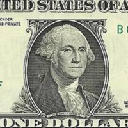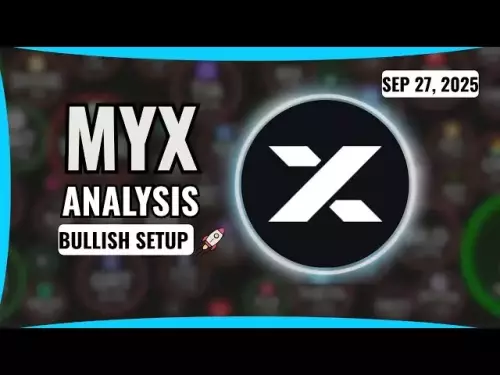-
 bitcoin
bitcoin $109523.663807 USD
-0.13% -
 ethereum
ethereum $4019.526508 USD
2.06% -
 tether
tether $1.000482 USD
0.00% -
 xrp
xrp $2.776815 USD
0.18% -
 bnb
bnb $958.942396 USD
0.12% -
 solana
solana $204.294698 USD
3.84% -
 usd-coin
usd-coin $0.999693 USD
0.00% -
 dogecoin
dogecoin $0.232115 USD
2.09% -
 tron
tron $0.338028 USD
0.84% -
 cardano
cardano $0.790920 USD
1.50% -
 hyperliquid
hyperliquid $44.871443 USD
5.60% -
 ethena-usde
ethena-usde $1.000322 USD
0.04% -
 chainlink
chainlink $21.034165 USD
2.60% -
 avalanche
avalanche $28.794831 USD
-0.54% -
 stellar
stellar $0.360466 USD
1.24%
Dogecoin stochastic oscillator strategy
The stochastic oscillator helps Dogecoin traders identify overbought (above 80) and oversold (below 20) levels, offering potential buy or sell signals when the %K line crosses the %D line.
Jul 07, 2025 at 02:50 am

Understanding the Stochastic Oscillator in Cryptocurrency Trading
The stochastic oscillator is a momentum indicator used to assess overbought or oversold conditions in financial markets, including cryptocurrencies like Dogecoin. It compares a specific closing price of an asset to a range of its prices over a certain period. In the context of Dogecoin trading, this tool helps identify potential reversal points by showing whether the coin is overbought (above 80) or oversold (below 20). Traders often rely on this oscillator to make informed decisions about entering or exiting positions.
This indicator consists of two lines: the %K line and the %D line. The %K line represents the current market momentum, while the %D line acts as a signal line, typically a 3-day moving average of the %K line. When these lines cross, it can generate buy or sell signals depending on their position relative to the overbought or oversold thresholds.
Applying the Stochastic Oscillator to Dogecoin Price Charts
To apply the stochastic oscillator to Dogecoin charts, traders need access to platforms such as TradingView, Binance, or other cryptocurrency analysis tools that support technical indicators. Begin by selecting the Dogecoin pair you're interested in, such as DOGE/USDT or DOGE/BTC. Then, locate the 'indicators' section on your charting platform and search for the stochastic oscillator.
Once added, customize the settings if necessary. The default setting is usually 14 periods, which means the oscillator analyzes the last 14 candles (time intervals) to calculate the momentum. Adjusting this value may be beneficial depending on your trading style — shorter timeframes like 5-minute or 15-minute charts might benefit from fewer periods, while daily charts often stick with the standard 14.
After configuring the settings, observe how the %K and %D lines interact with the overbought and oversold zones. A common strategy involves waiting for the %K line to cross above the %D line in the oversold zone as a potential buy signal. Conversely, when the %K line crosses below the %D line in the overbought region, it may indicate a sell opportunity.
Combining the Stochastic Oscillator with Other Indicators for Better Accuracy
Relying solely on the stochastic oscillator can lead to false signals, especially in highly volatile markets like Dogecoin. Therefore, combining it with other technical indicators enhances its reliability. One popular approach is integrating it with moving averages, particularly the 50-period and 200-period exponential moving averages (EMA). These help determine the overall trend direction.
Another effective combination involves using the Relative Strength Index (RSI) alongside the stochastic oscillator. While both are momentum indicators, RSI provides additional insight into overbought or oversold levels. If both the stochastic oscillator and RSI show oversold conditions simultaneously, the probability of a bounce increases significantly.
Additionally, incorporating volume indicators such as On-Balance Volume (OBV) or Volume Weighted Average Price (VWAP) can confirm whether the price movement is supported by strong volume. This multi-indicator strategy reduces the likelihood of acting on misleading signals and improves trade accuracy.
Setting Up Entry and Exit Points Using the Stochastic Oscillator
To execute trades based on the stochastic oscillator, define clear entry and exit rules. For a buy setup, wait until the %K line crosses above the %D line while both are below the 20 level. This suggests that downward momentum is weakening and a potential reversal is imminent.
Place a limit order slightly above the candlestick where the crossover occurred to ensure entry at a favorable price. Set a stop-loss just below the recent swing low to protect against sudden drops. As for take-profit levels, consider using a risk-to-reward ratio of at least 1:2, meaning if your stop-loss is 5% away, your target should be at least 10% higher.
For a sell setup, look for the %K line crossing below the %D line in the overbought area (above 80). Confirm the bearish signal with other indicators and place a limit sell order below the crossover candle. Position your stop-loss above the recent high and set your take-profit level according to your risk appetite.
It's crucial to backtest your strategy before applying it live. Use historical data of Dogecoin price movements to simulate how your entry and exit rules would have performed in past cycles. This step ensures that your strategy aligns with real-world volatility and behavior.
Risk Management When Using the Stochastic Oscillator for Dogecoin Trading
Effective risk management is essential when applying the stochastic oscillator to Dogecoin trading. Given the coin’s notorious volatility, even well-timed entries can result in losses without proper safeguards. Start by determining the maximum amount of capital you're willing to risk per trade—many professionals recommend not risking more than 1-2% of your total portfolio on a single trade.
Use position sizing to adjust the number of Dogecoins traded based on your stop-loss distance. If your stop-loss is far from your entry point, reduce the number of coins traded to maintain proportional risk. Also, avoid placing all your funds in one trade; instead, diversify across multiple setups or assets to spread exposure.
Set automatic stop-loss orders to prevent emotional decision-making during rapid price swings. Consider using trailing stops to lock in profits as the price moves in your favor. Finally, always keep a trading journal to document every trade, including reasons for entry, outcome, and lessons learned. This practice allows continuous refinement of your stochastic oscillator strategy.
Frequently Asked Questions
Q: Can the stochastic oscillator be used effectively on all timeframes for Dogecoin trading?A: Yes, the stochastic oscillator works on various timeframes, but its effectiveness varies. Shorter timeframes like 5-minute or 15-minute charts may produce more frequent but less reliable signals due to increased noise. Longer timeframes such as 4-hour or daily charts offer more stable readings and are preferred by many traders for strategic decision-making.
Q: What are the best settings for the stochastic oscillator when trading Dogecoin?A: The most commonly used setting is 14 periods, which suits general trading purposes. However, active day traders might prefer lower values like 7 or 10 periods for faster signals. Swing traders may opt for 21 or 30 periods to filter out minor fluctuations and focus on major trends.
Q: Is it safe to trade Dogecoin using only the stochastic oscillator?A: No, relying solely on the stochastic oscillator can lead to false signals, especially in erratic markets. Always combine it with other indicators such as moving averages, RSI, or volume-based tools to improve accuracy and reduce risk.
Q: How do I know if a stochastic oscillator signal is valid for Dogecoin?A: Valid signals are confirmed through confluence with other indicators and chart patterns. Look for alignment with key support/resistance levels, trendlines, or candlestick formations. Additionally, volume spikes during crossovers increase the likelihood of a genuine move.
Disclaimer:info@kdj.com
The information provided is not trading advice. kdj.com does not assume any responsibility for any investments made based on the information provided in this article. Cryptocurrencies are highly volatile and it is highly recommended that you invest with caution after thorough research!
If you believe that the content used on this website infringes your copyright, please contact us immediately (info@kdj.com) and we will delete it promptly.
- Bitwise, Solana, and the ETF Filing Frenzy: What's the Deal?
- 2025-09-28 06:25:16
- Ruvi AI: Surpassing Tron's Demand, the Next 100x Token?
- 2025-09-28 06:25:16
- BSE, IPOs, and Crypto Funds: A New York Minute on India's Regulatory Tightrope
- 2025-09-28 06:30:01
- Ruvi AI: The Avalanche Ecosystem's Next Big Thing, Blazing Through Phase 3
- 2025-09-28 06:30:01
- Tron, Ruvi AI, and Institutional Backing: What's the Buzz?
- 2025-09-28 06:30:01
- Q-UP: Is Coin Flipping the Next eSports Sensation? A Look at Fairness in Gaming
- 2025-09-28 06:30:15
Related knowledge
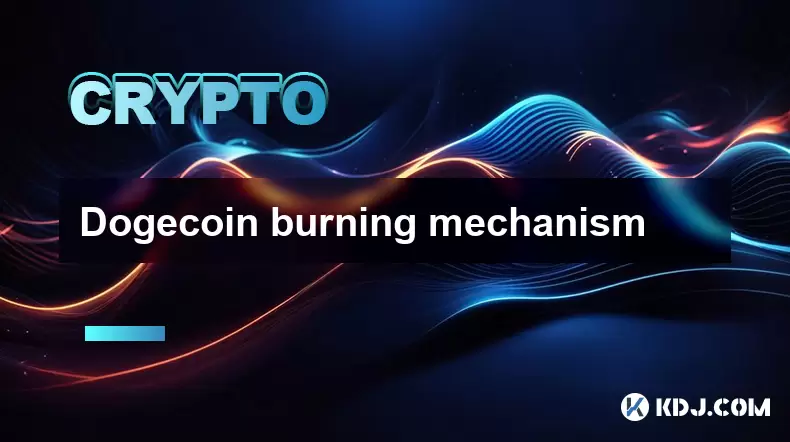
Bitcoincoin burning mechanism
Jul 20,2025 at 09:21pm
What is the Dogecoin burning mechanism?The Dogecoin burning mechanism refers to the process of permanently removing DOGE tokens from circulation by se...

How to earn free Bitcoincoin?
Jul 19,2025 at 10:08pm
What is Dogecoin and Why Earn It?Dogecoin (DOGE) started as a meme-based cryptocurrency in 2013 but has grown into a widely recognized digital asset. ...

Is Coinbase a good wallet for Bitcoincoin?
Jul 19,2025 at 04:42pm
Understanding Coinbase as a Wallet Option for DogecoinWhen considering where to store Dogecoin, Coinbase is often mentioned as a potential option due ...

How to buy Bitcoincoin with PayPal?
Jul 23,2025 at 06:57am
Understanding the Basics of Buying DogecoinBefore diving into the process of buying Dogecoin with PayPal, it’s essential to understand what Dogecoin i...
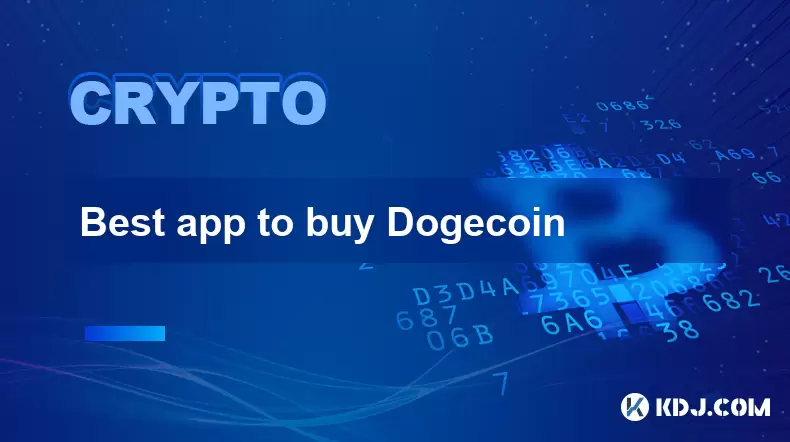
Best app to buy Dogecoin
Jul 23,2025 at 03:08pm
What Is a Cryptocurrency Exchange and How Does It Work?A cryptocurrency exchange is a digital marketplace where users can buy, sell, or trade cryptocu...
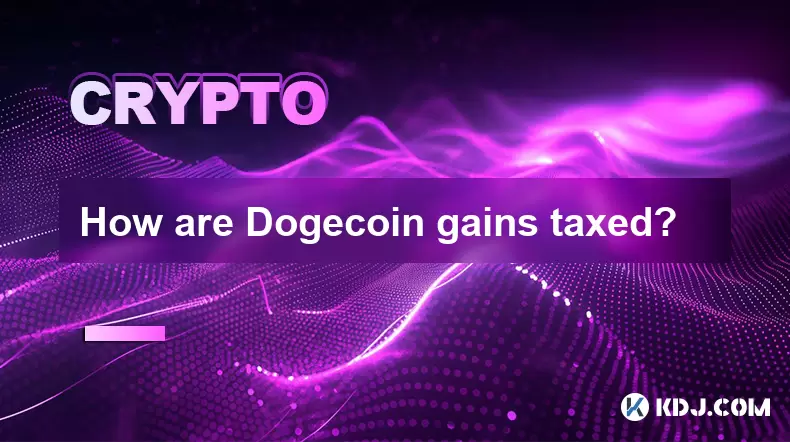
How are Dogecoin gains taxed?
Jul 25,2025 at 07:01am
Understanding the Taxation of Dogecoin GainsWhen it comes to Dogecoin (DOGE), many investors are drawn to its meme-inspired branding and volatile pric...

Bitcoincoin burning mechanism
Jul 20,2025 at 09:21pm
What is the Dogecoin burning mechanism?The Dogecoin burning mechanism refers to the process of permanently removing DOGE tokens from circulation by se...

How to earn free Bitcoincoin?
Jul 19,2025 at 10:08pm
What is Dogecoin and Why Earn It?Dogecoin (DOGE) started as a meme-based cryptocurrency in 2013 but has grown into a widely recognized digital asset. ...

Is Coinbase a good wallet for Bitcoincoin?
Jul 19,2025 at 04:42pm
Understanding Coinbase as a Wallet Option for DogecoinWhen considering where to store Dogecoin, Coinbase is often mentioned as a potential option due ...

How to buy Bitcoincoin with PayPal?
Jul 23,2025 at 06:57am
Understanding the Basics of Buying DogecoinBefore diving into the process of buying Dogecoin with PayPal, it’s essential to understand what Dogecoin i...

Best app to buy Dogecoin
Jul 23,2025 at 03:08pm
What Is a Cryptocurrency Exchange and How Does It Work?A cryptocurrency exchange is a digital marketplace where users can buy, sell, or trade cryptocu...

How are Dogecoin gains taxed?
Jul 25,2025 at 07:01am
Understanding the Taxation of Dogecoin GainsWhen it comes to Dogecoin (DOGE), many investors are drawn to its meme-inspired branding and volatile pric...
See all articles




















